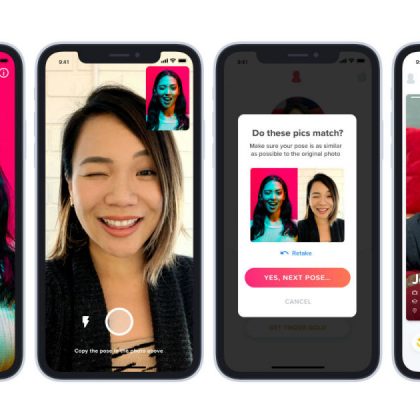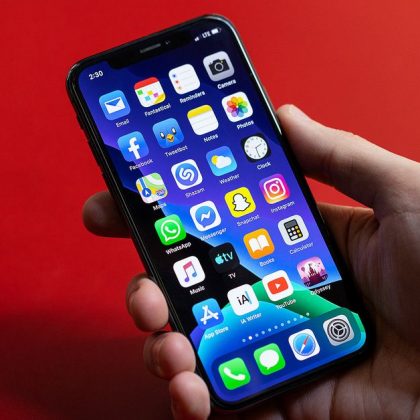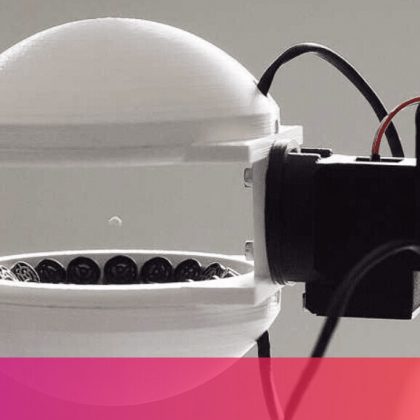“I often feel like some sort of [technology] bridge,” singer, songwriter, artist, and producer Björk tells me over the telephone from her home in Iceland. “I’m there in the middle, to translate nerddom to the normal people or something.”
Her mix of Icelandic accent and audible excitement makes every word sound full and round as she describes her personal push-pull relationship with high-end gadgets. For decades, Björk has been renowned for layering synthesizers and electronic effects on top of her indelible singing voice to push pop music’s boundaries (not to mention music videos full of cutting-edge CGI). Professionally, she’s relished new technologies that answer her constant art-making hunch of, “someone should have invented this by now!” But in her personal life, Björk is sometimes woefully behind. She admits, for instance, that she was nearly a decade behind everyone else in her life to use systems like SMS texting and Facebook.
“I like extremes,” Björk tells Ars. “I like things when they’re really acoustic—really, hairs and bones and blood and shit. And I like the extreme opposite, where the tool or the craft gets to be the queen and takes over.”
Björk’s dynamic relationship with technology comes into stark relief when considering the reason she’s calling Ars Technica: a project called Vulnicura VR. This is arguably the world’s first full “VR pop album,” and it’s now available on Windows PC via Steam for $24.99. It, too, feels like a technology bridge in the middle: an experience sitting between VR’s skeptical critics and its feverish admirers. It’s equal parts approachable and wild. Grounded in nature and simple VR filmmaking tricks, the album floats into the sky in experimental fashion like a neon-scorched phoenix.
For a certain audience of VR fan, Vulnicura VR isn’t necessarily new. The project first emerged publicly in 2015, when Björk released a 360-degree video for “Stonemilker,” the lead single on the 2015 studio album Vulnicura. That project came out at the beginning of VR’s tipping point, in terms of mainstream interest, thanks to cheap “VR shells” like Google Cardboard. Suddenly, anyone could convert a high-end smartphone into a VR viewmaster of sorts.
While most early VR experimenters threw a mess of unfocused visuals and noise at their 360-degree projects, Björk’s first VR video was different. It wasn’t a mess. It was simple, refined, and marked by cinematic restraint.
The crew, led by filmmaker Andy Thomas Huang, placed a single 360-degree camera on a beach where Bjork had written the song—and had grappled with her recent, real-life divorce. In the video, Björk dances around the viewer, often slinking towards them and making direct eye contact, before splitting into multiple versions of herself, all dancing slowly around the viewer. It’s a clever spin on the feeling of relationship unease: of becoming multiple dancing bodies, spun into anxiety and eager to know what’s wrong (“like milking a stone to get you to say it,” she sings). Meanwhile, a gray ocean’s waves approach nearby, hinting to the same unease that can be heard in the song’s aching, stripped-down string section. There’s no camera trickery, no perspective warping, and nothing that requires spinning around to look all over the place. It’s immersive, haunting, and memorable.
After exhibiting this video at Brooklyn’s Rough Trade record shop in late 2015 and seeing the public’s positive response, Björk accepted offers to build more VR videos for the album’s songs. This week’s Vulnicura VR app collects everything developed during the traveling exhibit’s multi-year run across the world, and it arrives at a time when owning a dedicated VR system isn’t as crazy as that sounded in 2015. “Weirdly enough, when I went into the VR album [four years ago], I allowed myself to dream that I’d be able to eventually release it on something as democratic as a gaming device,” Björk says. “But I decided that’d be a bonus. I couldn’t have that as an end target. I had to let the industry or whatever it is develop, and trust it. That, if I didn’t feel it was friendly to creating things, it was in my head. I had to change my attitude [to create something in VR], not the industry’s attitude.”
Read More





